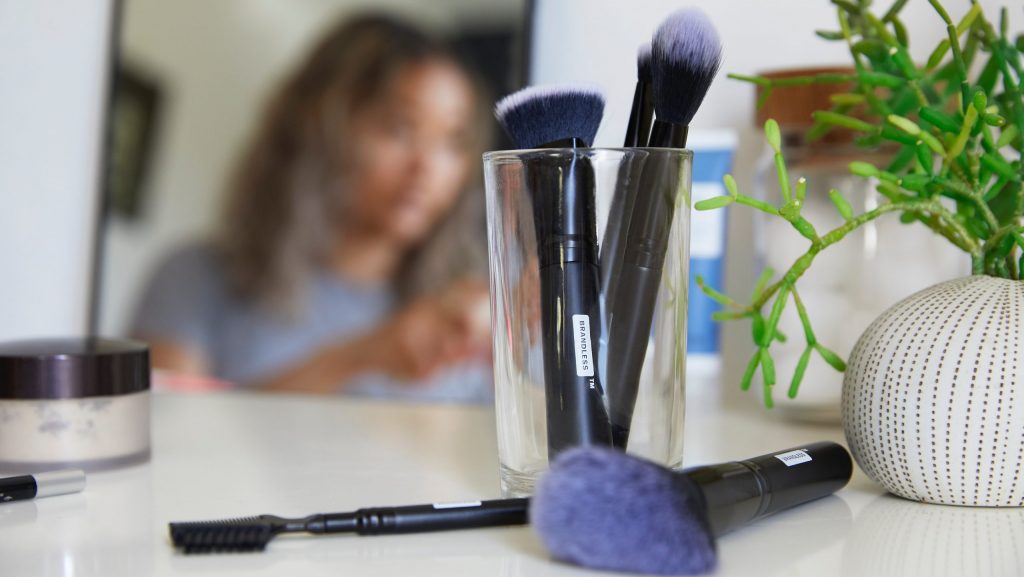This Guide to Vegan Beauty Products Will Help You Be Ethical and Gorgeous
Do you know what you’re putting on your face? Veganism isn’t just a dietary-choice. One expert advises on how to utilize beauty products that are animal and cruelty-free.

Veganism is trending, but dietary concerns are just one part of what it means to be vegan.
There’s also a whole other aspect of the lifestyle, which includes committing to using only vegan personal care and beauty products — these are plant-based items that are free of animal-derived ingredients and have not been tested on animals.
Interested in making your world more sustainable?
101.9 WDET wants to help. Sign-up to be contacted by our editorial team on the stories you want to hear.

Jessica Hayes is a vegan beauty expert and freelance makeup artist. She says that participating in the vegan lifestyle comes down to a personal decision, but more and more traditional beauty brands are getting on board.
“I first became interested in vegan beauty when I transitioned to more of a vegan diet, and then I realized there was much more that came with a vegan diet,” says Hayes.
Click on the player above to hear Jessica Hayes talk about how to incorporate vegan beauty into your life, and read tips to transition below.
What makes a beauty product vegan?
Hayes says a vegan beauty product is one that is made with plant-based ingredients and does not include any animal products or animal testing. One of the biggest environmental benefits of using vegan beauty products is that they are not connected to industrial animal agriculture.
According to a paper in the Pace University Law School Library, “factory farming is a major contributor to water and air pollution as well as deforestation. Factory-farmed animals produce more than one million tons of manure every day.”
What animal-based ingredients should I look out for in beauty products?
The New York Times offers some common ingredients to avoid: Honey, beeswax, lanolin (wool grease), squalene (shark liver oil), carmine (crushed-up beetles), gelatin (cow or pig bones, tendons or ligaments), allantoin (cow urine), ambergris (whale vomit) and placenta (sheep organs).
Are vegan beauty products also cruelty-free?
Hayes says when a product is considered vegan, it means there’s absence of animal ingredients and testing on animals, while cruelty-free refers to a product that just skips animal testing.

Wet ‘N Wild for instance, is considered by many to be a vegan line, but Hayes notes that since they started selling their products in mainland China, where it’s required to test on animals before a product can hit the shelves. She would actually consider the line to be “plant-based,” since they have no animals derived ingredients, but still test on animals.
There seems to be some debate about whether or not the brand has managed to find a way to continue its cruelty free policy while still selling products in China.
On how she reconciles a love of beauty with her personal morals, Hayes says she “became really interested in cruelty-free beauty. And beauty, as much as we love it, it’s not a necessity in our lives. So to test on animals for something that is purely vanity; there are so many other solutions and products that we can choose from.”
Hayes, who is a popular vegan makeup artist on social media, notes that the community around cruelty-free and vegan beauty has significantly grown in recent years.
What vegan beauty product lines do you recommend?
Affordable brands include e.l.f and Pacifica, while mid-range brands she loves include Kat Von D, Lime Crime, Milk and Nabla. Hayes adds that beauty stores Sephora and Ulta have started making it easier to search for vegan products, so if you type ‘vegan’ into the search bar on those sites, you will find a collection of their vegan product lines.
Up next
Skip Forever 21 With These 5 Tips For a More Sustainable Wardrobe
People are buying and discarding clothing at a rate that has never been seen before.
According to the New York Times, the United States generated nearly 12 million tons of textile waste in 2015, that’s about 75 lbs per person. Read more
Support the news you love.
Here at WDET, we strive to make our journalism accessible to everyone. As a public media institution, we maintain our journalistic integrity through independent support from readers like you. If you value WDET as your source of news, music, and conversation, please consider making a gift today. Even $5 a month helps!

